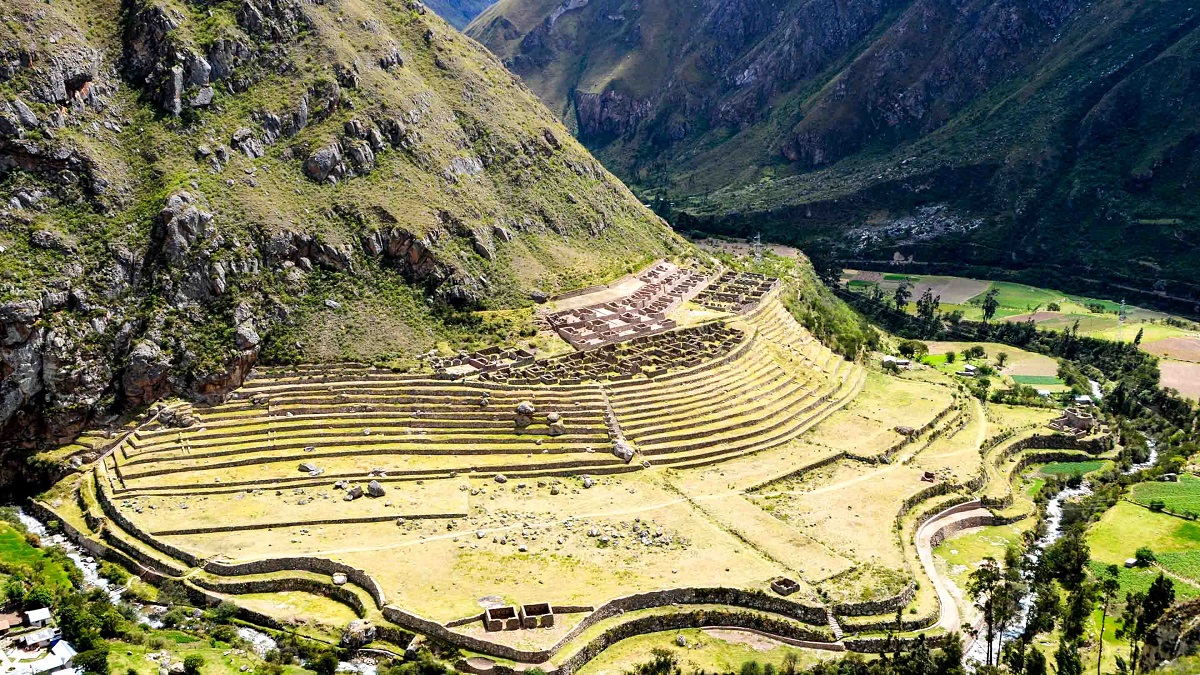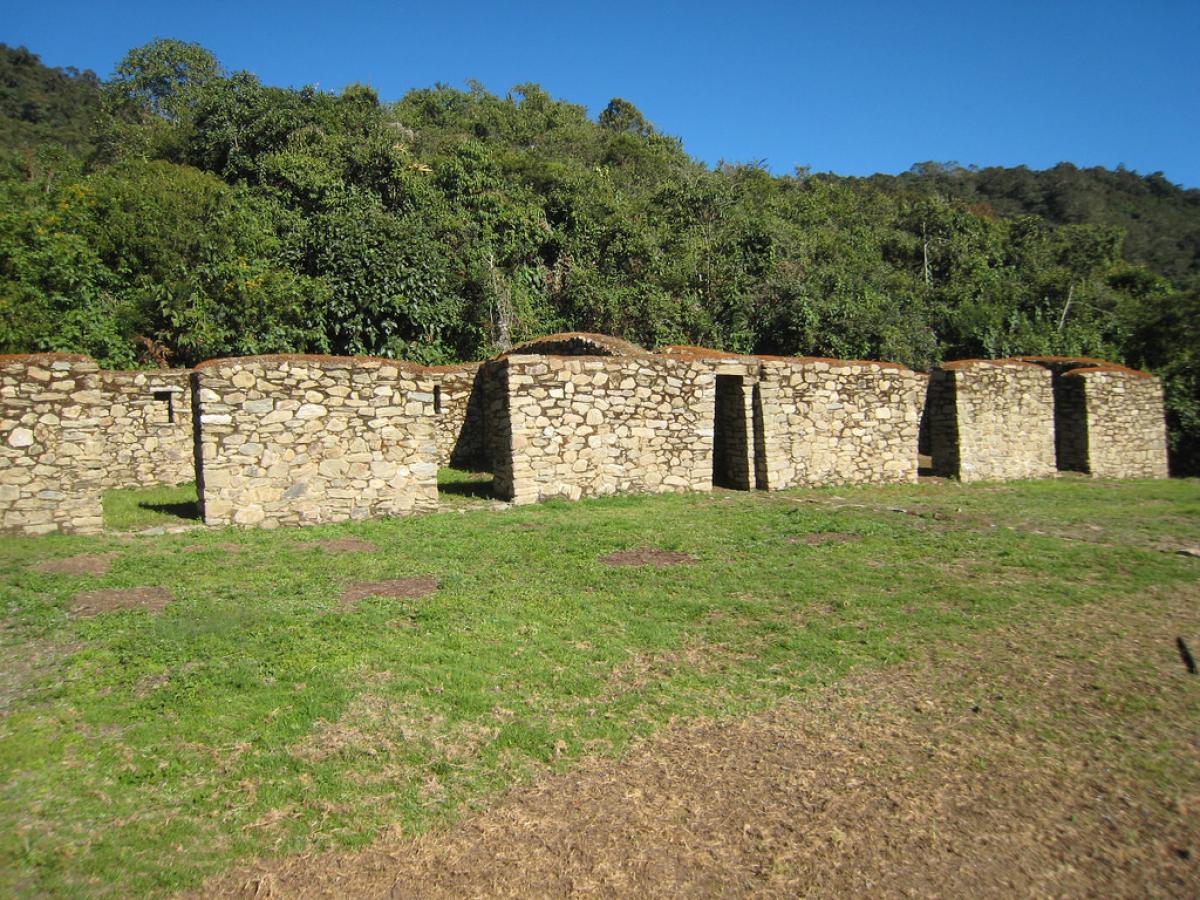
A few hours after starting the Inca Trail trek to Machu Picchu, hikers have their first significant encounter with Inca architecture at the Llactapata complex. Located in the Cusichaca river valley, this extensive archaeological site is the first large settlement seen on the route, serving as an introduction to the engineering and organization that will characterize the entire journey.
Llactapata functioned mainly as an agricultural center and a control post. Its most notable feature is the system of andenes or farming terraces that adapt to the mountainside, designed for the production of corn and other crops that probably supplied travelers and the elite heading to Machu Picchu.
For travelers, Llactapata presents itself as an impressive panoramic view. Generally, the site is not walked through inside, but is observed from a viewpoint on the opposite hillside, which allows you to appreciate its design and its integration with the surrounding landscape. This first vision sets the tone for the trek, revealing the scale and complexity of the Inca settlements that will be found in the following days.
Llactapata - Llaqta = Town, Pata = High place, is an Inca town, located at 2,840 m. / 8,136 ft. at the confluence of the Cusichaca, Urubamba rivers in the mountain called Patallaqta, province of Urubamba, department of Cusco.
These are constructions with several well-defined sectors, enclosures, platforms, squares, canals, etc. Highlight, especially the agricultural terraces and their drainage system. This archaeological site should not be confused with another place of the same name, located west of Machu Picchu, which can be visited on the famous Salkantay Trek, which was a ceremonial center.
Llactapata of the Inca Trail was an eminently agricultural town, it was probably the place where the products of the Valley were concentrated. It has constructions separated from the platforms that could be barns.

The Inca Trail shows rugged geographies with ascents and descents on the side of precipices. The mountains reach great heights with uneven stretches. In the jungle areas you will see the variety of tones of green tropical forests.

Particularity of the picturesque road Llaqtapata - Hidroelectrica:
Inca Trail, the only place where you can see the back of the citadel of Machu Picchu.
It is in a good state of conservation, by intervention of the Decentralized Directorate of Culture Cusco (former Regional Directorate Of Culture).

Due to the high demand for tickets, you must get entry tickets to the Inca Trail a long time in advance (6 months). The purchase is made only through the Internet through the website of an authorized tourism agency. In total 500 people enter the trails of the Inca Trail every day. Of them, only 200 are tourists. The rest is support personnel such as cooks, porters, guides. The ticket to enter the Inca Trail includes the support staff.
Didn't you find availability for the Inca Trail? Don't worry, finding the Inca Trail permits sold out is a common situation due to high demand. Fortunately, there are excellent alternatives to get to Machu Picchu, each offering a different experience. Below are the main options:
It is essential to remember that, regardless of the route you choose, the entrance ticket to the citadel of Machu Picchu must be booked separately and well in advance, as it also has limited availability.
From May to September (dry season) is the ideal time to travel the Inca Trail to Machu Picchu. These months are usually good for the crossing due to the low frequency of rains. In the months of November to March the summer (rainy season) occurs. This time is usually very rainy, which makes walking and access difficult. Even, it will not be able to cross the Inca Trail in February due to the precipitations and works of maintenance.
 |  |
Getting to Machu Picchu on foot is an experience that combines effort, adventure, and unique landscapes of the Peruvian Andes. Each route offers views of mountains, valleys, and archaeological remains that make the journey as memorable as the final destination. Discover the most iconic hikes to the Inca citadel:
Other equally fascinating tours: